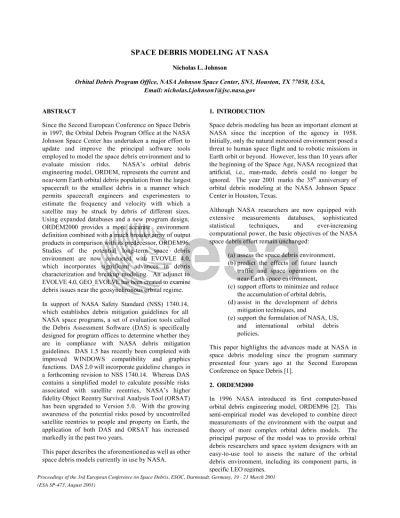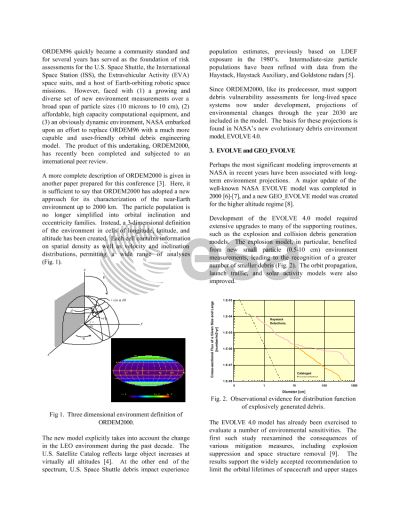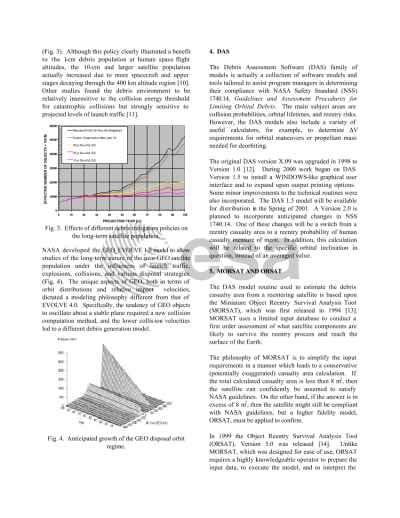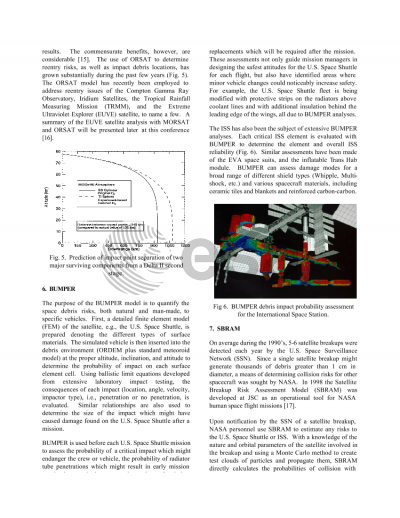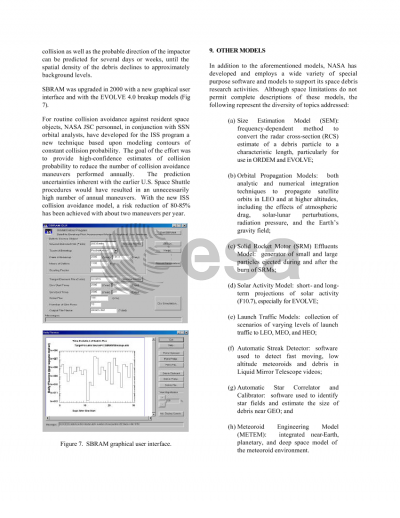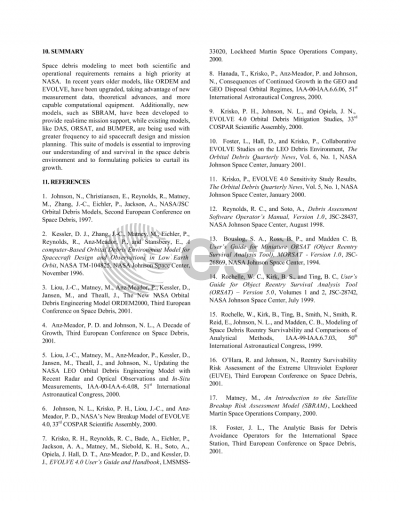Document details

Abstract
Since the Second European Conference on Space Debris in 1997, the Orbital Debris Program Office at the NASA Johnson Space Center has undertaken a major effort to update and improve the principal software tools employed to model the space debris environment and to evaluate mission risks. NASA's orbital debris engineering model, ORDEM, represents the current and near-term Earth orbital debris population from the largest spacecraft to the smallest debris in a manner which permits spacecraft engineers and experimenters to estimate the frequency and velocity with which a satellite may be struck by debris of different sizes. Using expanded databases and a new program design, ORDEM2000 provides a more accurate environment definition combined with a much broader array of output products in comparison with its predecessor, ORDEM96. Studies of the potential long-term space debris environment are now conducted with EVOVLE 4.0, which incorporates significant advances in debris characterization and breakup modeling. An adjunct to EVOLVE 4.0, GEO EVOLVE has been created to examine debris issues near the geosynchronous orbital regime. In support of NASA Safety Standard (NSS) 1740.14, which establishes debris mitigation guidelines for all NASA space programs, a set of evaluation tools called the Debris Assessment Software (DAS) is specifically designed for program offices to determine whether they are in compliance with NASA debris mitigation guidelines. DAS 1.5 has recently been completed with improved WINDOWS compatibility and graphics functions. DAS 2.0 will incorporate guideline changes in a forthcoming revision to NSS 1740.14. Whereas DAS contains a simplified model to calculate possible risks associated with satellite reentries, NASA's higher fidelity Object Reentry Survival Analysis Tool (ORSAT) has been upgraded to Version 5.0. With the growing awareness of the potential risks posed by uncontrolled satellite reentries to people and property on Earth, the application of both DAS and ORSAT has increased markedly in the past two years. This paper describes the aforementioned as well as other space debris models currently in use by NASA.
Preview
